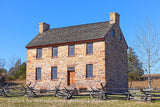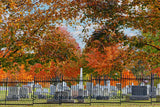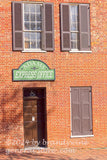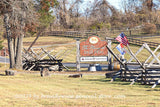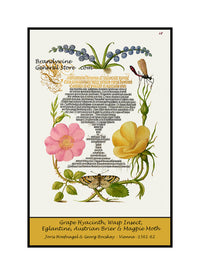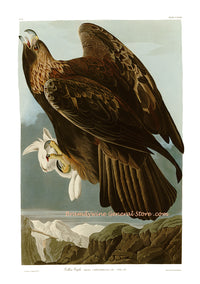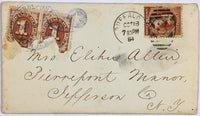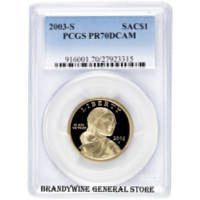Belted Kingfisher Fine Art Bird Print by John James Audubon
An archival premium Quality art Print of The Belted Kingfisher by John James Audubon for sale by Brandywine General Store. This blue bird was picture or plate number 77 in Audubon's great ornithology book, The Birds of America, the first Havell edition. The painting shows three specimens of this beautiful blue bird, two females and one male. The birds are situated along a wetlands area in some southern location, two are perched on stumps and one of the kingfishers has a fish sticking out of her mouth, it looks like she is going to swallow the fish whole for her supper. We have made the sky blue in behind the birds, in the original Audubon painting, the sky was white and it has considerably yellowed over the 175 years since the illustration was produced in Birds of America.
Mr. Audubon describes the Belted Kingfisher thus "The Belted Kingfisher!--Now, kind reader, were I infected with the desire of giving new names to well-known objects, you may be assured that, notwithstanding the partly appropriate name given to this bird, I should call it, as I think it ought to have been called, the United States' King-fisher. My reason for this will, I hope, become apparent to you, when I say that it is the only bird of its genus found upon the inland streams of the Union. Another reason of equal force might be adduced, which is, that, although the males of all denominations have, from time immemorial, obtained the supremacy, in this particular case the term Belted applies only to the female, the male being destitute of the belt or band by which she is distinguished. This species is a constant resident in the States of Louisiana, Mississippi, Arkansas, and all the districts that lie to the south of North Carolina. Its inland migrations along the windings of our noble rivers extend far and wide, over the whole of the United States. In all those portions which I have visited it also breeds, although it returns to the south from many parts during severe winters. The flight of this bird is rapid, and is prolonged according to its necessities, extending at times to considerable distances, in which case it is performed high in the air. When, for instance, the whole course of one of our northern rivers becomes frozen, the Kingfisher, instead of skimming closely over the surface that no longer allows it to supply itself with food, passes high above the tallest trees, and takes advantage of every short cut which the situation of the river affords. By this means it soon reaches a milder climate. This is also frequently the case, when it seems tired of the kind of fish that occurs in a lake, and removes to another in a direct line, passing over the forests, not unfrequently by a course of twenty or thirty miles towards the interior of the country. Its motions when on wing consist of a Series of flaps, about five or six in number, followed by a direct glide, without any apparent undulation. It moves in the same way when flying closely over the water. If, in the course of such excursions, the bird passes over a small pool, it suddenly checks itself in its career, poises itself in the air, like a Sparrow Hawk or Kestril, and inspects the water beneath, to discover whether there may be fishes in it suitable to its taste. Should it find this to be the case, it continues poised for a few seconds, dashes spirally headlong into the water, seizes a fish, and alights on the nearest tree or stump, where it swallows its prey in a moment. The more usual range of the Belted Kingfisher, however, is confined to the rivers and creeks that abound throughout the United States; all of which, according to the seasons, are amply supplied with various fishes, on the fry of which this bird feeds. It follows their course up to the very source of the small rivulets; and it is not unusual to hear the hard, rapid, rattling notes of our Kingfisher, even amongst the murmuring cascades of our higher mountains. When the bird is found in such sequestered situations, well may the angler be assured that trout is abundant. Mill-ponds are also favourite resorts of the Kingfisher, the usual calmness of the water in such places permitting it to discover its prey with ease. As the freshets are proportionally less felt on the adjoining shores, the holes dug in the earth or sand by this species, in which it deposits its eggs, are generally found in places not far from a mill worked by water..." Audubon bird print #77



